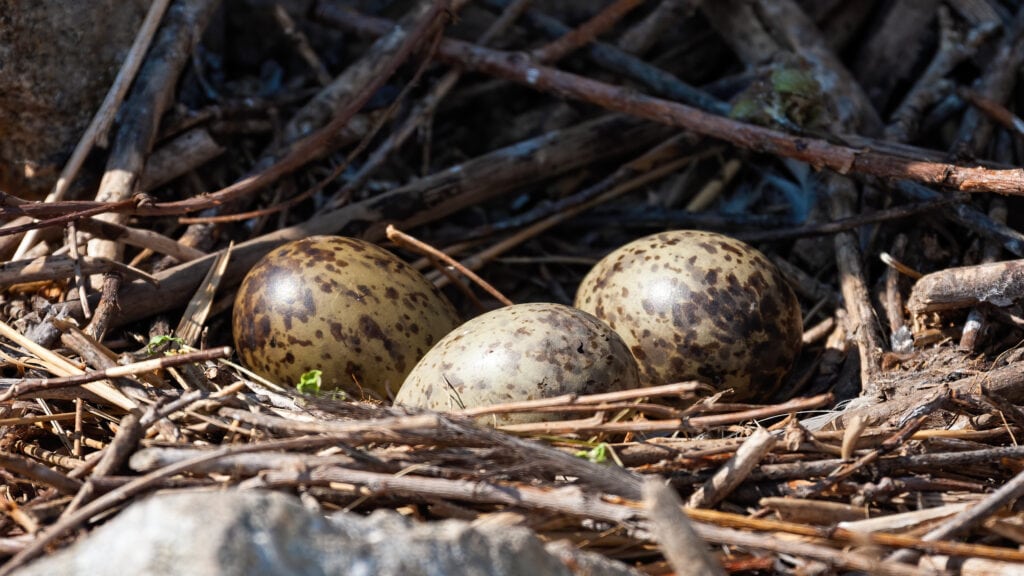There are more than 1,480 species of birds that are considered endangered globally. This does not include species that are merely threatened, common species that are declining, or even birds whose global populations are stable but who are disappearing from sections of their historical range. Even excluding all of these circumstances, the number of birds facing the very real possibility of extinction is staggering. For many of these endangered species, conservation efforts are laser-focused on the breeding process. Birds breeding in the wild are closely monitored, breeding grounds are built, restored, or protected, and some birds are even sustained by captive breeding programs.
Related Article: Maryland Terns Kept Afloat By “Life Raft” Colony
What this means is that the fate of an entire species often comes down to something very simple. Eggs. In the 1970s, the pesticide DDT was banned after decades of observation regarding its detrimental effects on wildlife. The damage to birds of prey, in particular, was devastating. DDT made their eggshells weak and brittle and nest failure caused dramatic decline in a number of species. Some, like the Peregrine Falcon, faced extinction but bounced back impressively. For others, like the California Condor, recovery has been painstakingly slow.
Now, a developing technology might present a solution for more effective breeding conservation practices. So-called “smart eggs” are research devices designed to look and feel like their respective species’ eggs. They are built with technology to monitor the natural incubation process; the temperature of incubation, the way the mother bird turns her eggs, and other vital information that might increase positive outcomes for eggs incubated in captivity.
For many critically endangered species, the incubation process is so delicate and important that conservationists remove eggs from the nest to give them the best chance of hatching, returning the hatched chicks to their parents once incubation is complete. Being able to replicate the exact conditions of natural incubation is a huge advantage when it comes to successfully pulling off this complex and difficult conservation technique.
Created by researchers at Texas A&M university, smart eggs are already yielding valuable information that may aid the conservation of the California Condor. Other species like the Laysan Albatross, some parrot and macaw species, and arctic ducks have been monitored using smart eggs since their invention.
While smart eggs may not be able to hatch into the endangered birds who incubates them, they may represent a new technology-driven source of hope for the restoration of these embattled species. The ability to incubate the eggs of the California Condor is just one more tool in conservationists’ belt when it comes to rebuilding this and other endangered bird populations.
Popular Article: Understanding the Conflict Between Bird Conservation and Renewable Energy

